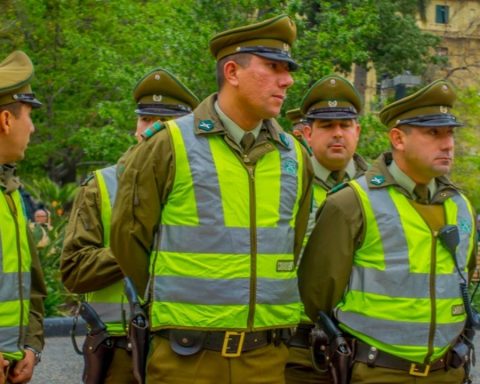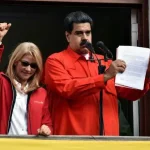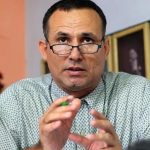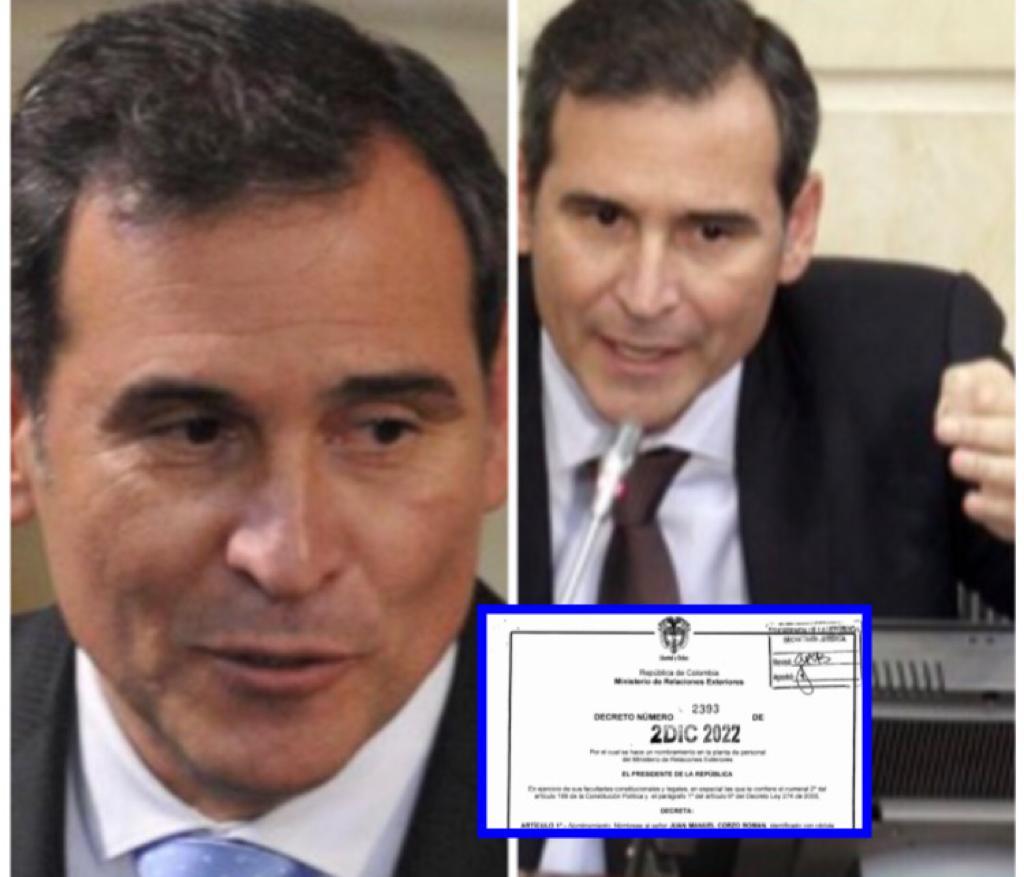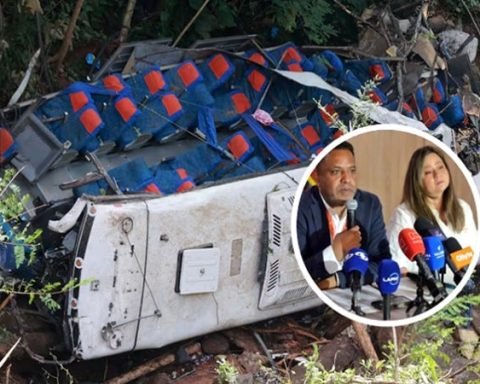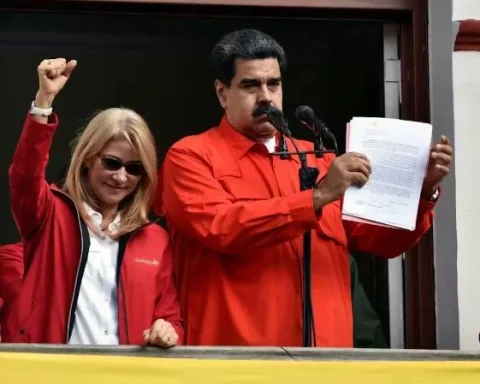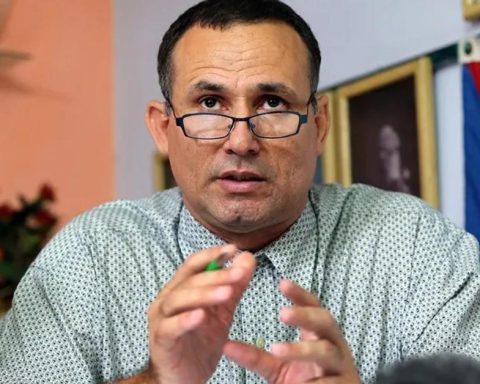“There is no agreement” and “we are fully aware that we are against time because we also have to take care of other emergencies”, is what the negotiators said when they left the room, who met this Monday from 9 a.m. in the morning until after 5:00 p.m. in the building of the former National Congress, in Santiago. This, as a continuation of the conversations that were left in suspense, after the hiatus –for 48 hours, since last Friday, December 2– that the parties took place to “probe different formulas with their bases.”
Three months after the exit plebiscite and after a series of meetings, disagreements, negotiations, the main issue remains the same: the formation of the constituent body and the role of the experts. Is worth to saywhether it should be 100% elected or Congress must designate a percentage of the members, a group that should also have expert status.
This Monday morning, the ruling party came up with its own formula to incorporate experts: a list designated by Congress, but ratified by the citizens. That is, they were subjected to the same choice of conventional futures. In this way, the experts – who would have a voice and a vote – would be endorsed at the polls. However, this mechanism did not find support in the opposition and also generated doubts within Democratic Socialism.
Guillermo Ramírez explained that “from the right we do not want the conventional vote to become a plebiscite on the mechanism. That is the weakness that we see in the pro-government proposal and that is why we are looking for other formulas.”
So far there are two main proposals. On the one hand, the official one – which contains guidelines that President Boric asked his coalitions to promote – and which broadly consists of: a preliminary draft drafted by experts that serves as an input; 100% elected body that elaborates the Constitution; the final proposal must be ratified by 4/7 in Congress; in addition to contemplating an exit plebiscite. And, on the other hand, there is the one presented by the right, whose guidelines are: a committee of 50 experts elected by Congress; proposed by the House and ratified by 4/7 of the Senate; he will write a non-binding draft that will serve as input; 50 elected on parity lists that will form a Constitutional Council, together with the 50 expert drafters of the constitutional input; a Technical Admissibility Committee made up of 14 members, who will review the motions presented and judge eventual inadmissibility.
“There is the proposition of the ruling party with the Christian Democracy, regarding a body 100% elected by the citizens, and the proposal that Chile Vamos has already made public, of a mixed system of 50% experts and 50% members elected by the citizenship. There remains a substantive difference between the parties”, summed up the socialist senator and president of the Upper House, Álvaro Elizalde.
“In other matters (…) there have been rapprochements and proposals have been put on the table that will be analyzed through these internal consultations and we hope that tomorrow we can resolve it,” added Elizalde.
Thus, in the opposition they viewed with good eyes that the ruling party was thinking about the possibility of incorporating experts. “Now we have to find the best way to do it so that all parties are satisfied,” said deputy Guillermo Ramírez (UDI), who added that the proposal with which the ruling party came this Monday – regarding a citizen ratification of the list of congressionally appointed experts – is “good news” for the talks.
The positive feeling of the opposition negotiators is reaffirmed –according to them– by the fact that “during the day the representatives of the left were interested in complementary issues, in the event that the commission was mixed. They wanted to know what it would be the quorum that the experts would be setting to prepare the constitutional draft, for voting in the same body and for ratification in Congress, as well as the voting dates”.
Regarding the first point, members of the opposition reported that they were open to exploring their ideas, if the left advanced to a mixed body, while, regarding the votes, they indicated that they hoped they would be “as soon as possible”, since they did not they want an exit plebiscite beyond 2023. However, the good intentions remained only in words, because the day closed without agreements.
The buts of a mixed body
Tomás Jordán, professor of Constitutional Law at the Alberto Hurtado University and who was coordinator of the constituent process carried out during the period of former President Michelle Bachelet, between 2014 and 2018, maintains that a mixed body has two complexities: one is “the democratic principle ”; and the other is the establishment of two types of conventions, where “the electorate is a direct democratic designation and the Congress is an indirect one,” he points out.
According to Jordán, the elect has a “popular mandate” and a specific program, while the expert would not be obliged to follow the guidelines of the party that appointed him or the orders of the community: “They will not necessarily have a mandate from Parliament, because he cannot command them, only name them. You cannot give a mandate to the public authorities appointed by Congress, neither to the National Prosecutor, nor to the Comptroller, for example”.
In addition, he adds that the idea that proposed a ratification by the citizens regarding the experts, “would give a popular endorsement to the list of experts, but not a popular mandate. An alternative is for the experts to carry out a program”.
At this point, what stands out from the experts is that –in the lawyer’s opinion– they reach an agreement quickly because they are less affected by the political factor of the situation.
Pablo Fuenzalida, Doctor of Law and researcher at the Center for Public Studies (CEP), indicates that in the last Convention there were also experts, but that the problem was the way in which they were recruited, giving them too much power via assignments to the conventional ones in order to of directly hiring advisors, and “leaving the Technical Secretariat, which was neutral, lost.”
One of the problems that Fuenzalida sees in a mixed body is that Congress is increasingly fragmenting, therefore -he explains-, “the struggles to give representation to each of these new parties that are appearing make it quite difficult to see that there is no further questioning of the origin of these experts”.
He assures that the underlying problem could be similar to the one with the formerly appointed senators.
In this regard, he adds that by proposing an admissibility committee made up of 14 members, who would also be experts and appointed by Congress, “certain biases can be created, bearing in mind that the two groups share prior knowledge and professional experiences.” .
Quorum and tutelage
Tomás Jordán believes that the idea that the proposal for a new Constitution be ratified by 4/7 in Congress points to the fact that the constitutional body writes “an approvable proposal.” However, according to the lawyer, the mechanism does not generate security. He gives an example to Iceland, where the constitutional proposal had to be ratified by the National Congress and “Parliament never processed it.”
He characterizes it as an “oversight”, given that twelve bases have already been established that guide the drafting of the new Constitution. “So there are twelve bases, ruling body, elected or mixed body, and also 4/7? I think there is a renunciation of constituent legitimacy there, ”he states.
Pablo Fuenzalida postulates that, in order to move forward with this idea, the quorum that the constituent body will have to approve regulations must first be defined, since “Congress could not have the same weight as the future Convention. In addition, if what is wanted it is more qualified people, the parties can nominate people according to a series of certain qualifications”, he points out.
Thus, it puts another mechanism on the table: that, instead of twelve borders, a clause like the one in the previous Convention be repeated –Article 135– and that Congress had the possibility that, with a high quorum – He gives an example of 2/3–, and in a certain time, he could make changes to the proposal that is going to be put to plebiscite. “A kind of bicameralization,” he details.
“Because this ensures that issues that are unpopular, that have a cross-sectional rejection, it is very possible that with a high quorum they will be reformed by Congress before the plebiscite. It would be a veto process with high quorum rules and with a very limited term. Otherwise, it would generate suspicion as to why Congress doesn’t make the reforms directly, instead of creating a body that Congress can bypass,” he adds.
The Next Steps: Time to Give In
Jordán assures that in an agreement the natural thing is that the pre-eminent position wins more. He points to the opposition as this group with the most power, for representing the forces of Congress that were for the winning option of the plebiscite on September 4.
However, he explains that “regardless of pre-eminent position, it takes everyone as a matter of quorum.” Thus, he maintains that the ruling party “has gained little” and has had to give up a lot.
Pablo Fuenzalida agrees that, up to now, he has had to give in more to the ruling party. “My impression, from a political point of view, is that it is now up to the opposition to show generosity in the face of what has been presented to it. Because the ruling party gave up the incorporation of previous borders with some ease. They even added more than what they were asking for, as well as the admissibility committee, which is also an idea that comes largely from the opposition,” he points out.

